Opal
Common mineral of the oxides and hydroxides class.
Opal is one of the very few amorphous minerals, which means that it has no crystal structure.
Apart from being amorphous, opal has some more specific features.
It consists of numerous tiny silica spheres. If these spheres are present in more or less the same size and in the right arrangement, diffraction and interference of light can produce the famous play of colour.
Opal shop
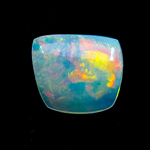
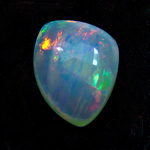
Opal contains up to 20% of water which may give rise to serious problems (see below: Worth knowing).
Transparent and translucent opals appear orange in transmitted light and bluish when viewed perpendicularly to the transmitted light. This phenomenon is known as opalescence.
The gem and jewellery trade knows three kinds of opal: precious opal (with play of colour), common opal (without play of colour) and fire opal (which comes both with and without play of colour).
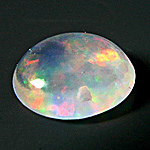
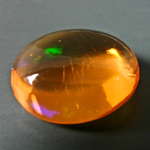
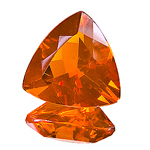
Mexican fire opal with and without play of colour
Origin of name: derived from the Latin word opalus or the Greek ὀπάλλιος opallios meaning "precious stone". The origin of both these words most probably is the Sanskrit upala.
Source: Wikipedia
Synonyms and trade names: opal has a plethora of trade names referring to body colour, play of colour, inclusions (moss opal) or origin.
To name a few: black opal, milky opal, crystal opal, boulder opal, matrix opal, harlequin opal, pinfire opal and many more
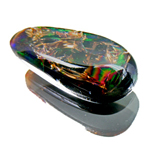
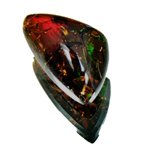
Mexican black obpal, found in the 1980ies
The stone on the left developed a crack and was thus worked into a doublet on onyx
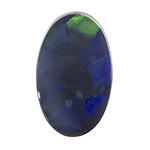
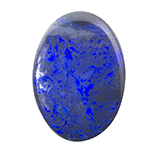
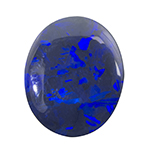
Black opal from Lightning Ridge, Australia
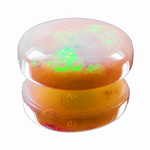
Milky opal from Coober Peedy, Australia
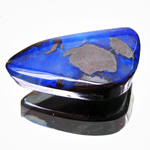
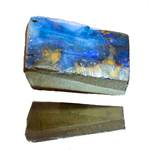
Two Australian boulder opals
Opal layers which are too thin to cut a gemstone but too good to be discarded are made into doublets and triplets. In a doublet the opal layer is glued onto a, mostly black, base of onyx or plastic. In a triplet this ensemble is covered by a protecting top of transparent material. Mostly glass or plastic are used for the top, occasionally rock crystal is used.
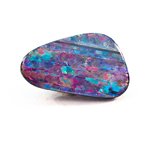
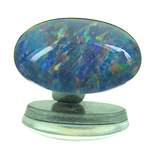
Opal doublet and triplet
Can be confused with: common opal without play of colour comes in many colours and patterns and may be confused with with a lot of other minerals. There are yellow and brown honey opals which resemble amber, agate opals which show an agate-like banding and moss opals with dendritic inclusions very similar to moss agate, to name just a few.
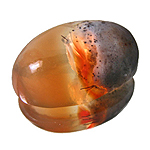
Common opal resembling jasper
Precious opals can be confused with synthetic opal.
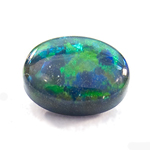
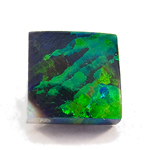
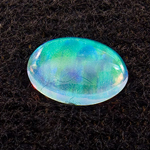
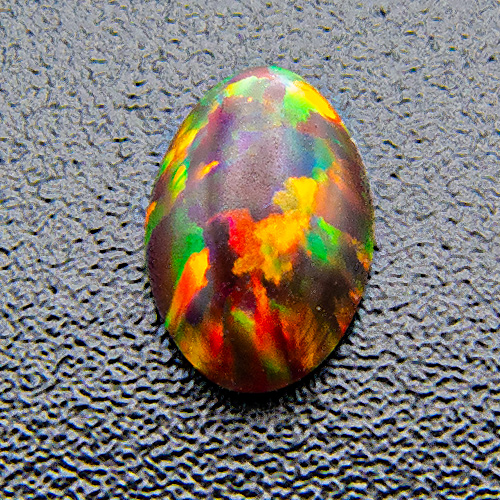
Synthetic opals
In Andamooka, South Australia, a porous rock with inclusions of precious opal is found. This is often colour enhanced to imitate black opal. The rocks are soaked in sugary liquid. A subsequent treatment with sulphuric acid turns the sugar into black carbon.
Some glasses, notably opal glass and Slocum glass, show opal-like colours and opalescence.
Localities: opal is found on all continents including Antarctica. However, most localities produce common opal only.
The most important source for precious opal is Australia. Lightning Ride in New South Wales is the origin of the famous and highly priced black opal. The Yowah opal field in Queens produces boulder opals and Coober Peedy in South Australia is known for milk opals and crystal opals.
Mexico is famous for fire opals, with, as well as without play of colour, and for matrix opals. The matrix is a light to dark brown ironstone containing pockets of precious opal.
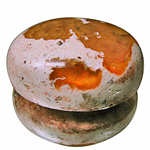
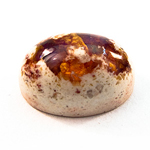
Brazil produces fire opals, sometimes of amazing sizes. Colours range from yellow to orange but occasionally reddish orange gems are found which match fine Mexican fire opals.
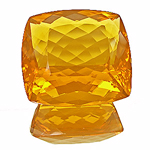
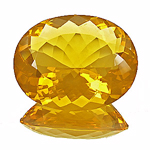
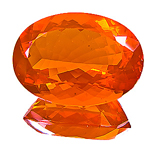
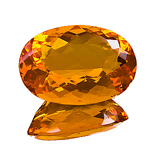
Brazilian fire opals
The largest stone weighs 48.20cts
Opal cat's eyes are also known from Brazil:
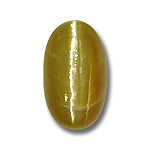
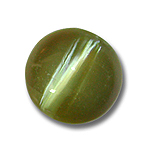
Since the 1990ies Ethiopia's Afar Province has established itself as an important source of fine precious opal. In the trade these opals are known as Welo Opals, named after the historical province of Welo (also Wello and Wollo).
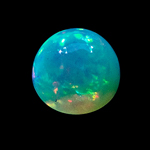
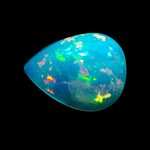
Welo opals
Handling: opals are extremly sensitive to heat and all acids. Unset during soldering! Do not place it under light bulbs or spotlights in the showcase, shop window etc.
Avoid great changes in temperature and humidity. Soft and brittle, set and wear with great care. Do not clean ultrasonically.
Worth knowing: the high content of water (up to 20%!) creates problems not to be underestimated.
When opal gives off it´s water, this may result in less sparkling colours, haziness and opacity and the development of cracks, up to complete destruction.
Some say that opals and opal jewellery should be stored in water.
Others strongly discourage from doing so, arguing that it will only create tension in the stone. They say it is much better to just let the opal acclimatize.
Opal shop
 Deutsch
Deutsch